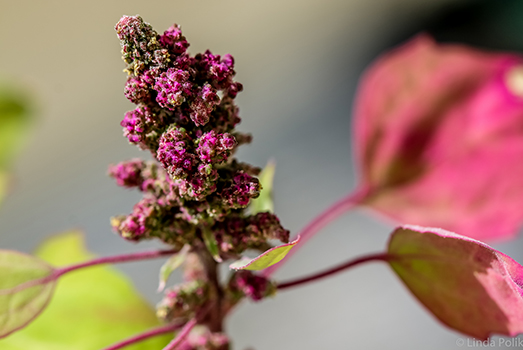Quinoa-quest to feed the world

The sequencing of the first high-quality quinoa genome by a KAUST-led research team could one day help transform our ability to feed the world’s growing population. © 2017 KAUST Linda Polik
Quinoa could hold the key to feeding the world's growing population because it can thrive in harsh environments like in the heat in Saudi Arabia and grows well on poor-quality, marginal land. KAUST researchers have completed the first high-quality sequence of the Chenopodium quinoa genome, and they have begun pinpointing genes that could be manipulated to change the way the plant matures and produces food.
"Quinoa was the staple grain that fueled the ancient Andean civilizations, but the crop was marginalized when the Spanish arrived in South America and has only recently been revived as a new crop of global interest," said KAUST Professor of Plant Science Mark Tester, who led the project team. "This means quinoa has never been fully domesticated or bred to its full potential even though it provides a more balanced source of nutrients for humans than cereals."
As a first step toward improving our understanding of how quinoa grows, matures and produces seeds, Tester's team decided to sequence its genome. They used a combination of techniques, including cutting-edge sequencing technologies and genetic mapping, to piece together full chromosomes the quinoa.
There is immense potential for the genome sequence to help scientists understand quinoa and therefore modify it for more widespread, commercial use. For example, breeders could use this genetic information to learn how to control plant size to favor shorter, stockier plants that are less likely to fall over. These more stable plants could support bigger seed heads and be grown closer together in large fields.
"We already know that the quinoa plant family is incredibly resilient," said Tester. "It can grow in poor soils, salty soils and at high altitudes. It really is a very tough plant. Quinoa could provide a healthy, nutritious food source for the world using land and water that currently cannot be used, and our new genome takes us one step closer to that goal."
Quinoa could hold the key to feeding the world's growing population because it can thrive in harsh environments like in the heat in Saudi Arabia and grows well on poor-quality, marginal land. KAUST researchers have completed the first high-quality sequence of the Chenopodium quinoa genome, and they have begun pinpointing genes that could be manipulated to change the way the plant matures and produces food.
"Quinoa was the staple grain that fueled the ancient Andean civilizations, but the crop was marginalized when the Spanish arrived in South America and has only recently been revived as a new crop of global interest," said KAUST Professor of Plant Science Mark Tester, who led the project team. "This means quinoa has never been fully domesticated or bred to its full potential even though it provides a more balanced source of nutrients for humans than cereals."
As a first step toward improving our understanding of how quinoa grows, matures and produces seeds, Tester's team decided to sequence its genome. They used a combination of techniques, including cutting-edge sequencing technologies and genetic mapping, to piece together full chromosomes the quinoa.
There is immense potential for the genome sequence to help scientists understand quinoa and therefore modify it for more widespread, commercial use. For example, breeders could use this genetic information to learn how to control plant size to favor shorter, stockier plants that are less likely to fall over. These more stable plants could support bigger seed heads and be grown closer together in large fields.
"We already know that the quinoa plant family is incredibly resilient," said Tester. "It can grow in poor soils, salty soils and at high altitudes. It really is a very tough plant. Quinoa could provide a healthy, nutritious food source for the world using land and water that currently cannot be used, and our new genome takes us one step closer to that goal."

